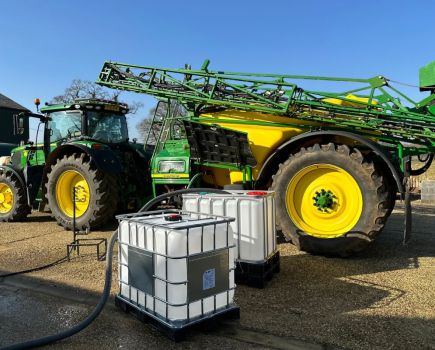Better weather provides ample opportunity to get cereals drilled, and there are some key management aspects to ensure good grassweed control is achieved.
By Tom Allen-Stevens
Improved field conditions across much of the UK provide an excellent opportunity for grassweed control, growers have been advised.
The pre-emergence timing for herbicides provides the best opportunity for chemical control, according to Syngenta field technical manager, James Southgate.
But there are fundamental factors that are critical for their success, he says:
- They should be used within an integrated programme that includes a number of non-chemical means of control.
- They should be applied within 48 hrs of drilling – hold back on drilling if it can’t be sprayed.
- Growers should use a minimum of three, preferably four active ingredients.
- Rates should be kept high.
- Follow best-practice application guidelines (click here for more).

The pre-em timing for herbicides provides the best opportunity for chemical control, says James Southgate.
“Soils across much of the UK are now drying out, presenting good opportunities for those who have delayed drilling,” notes James.
“It’s a high dormancy year, so blackgrass is still emerging in stubbles and earlier drilled crops, and it’s growing fast.”
Cultivations for most autumn-drilled crops are now complete, but these shouldn’t be relied on to control grassweeds, he says.
“Spray off with glyphosate before drilling and if more grassweeds emerge after the drill’s gone through, consider adding glyphosate to the pre-em treatment.”
Increasing the number of ai’s in a pre-em stack consistently delivers increased control.

Source: Syngenta; average 26 trials from 2010-16
He advises growers to choose Defy (prosulfocarb) as their first addition to a flufenacet-based stack of pre-em actives, in favourable seedbed conditions – clod-free, moist and where seed is at a depth below 30mm.
“It should be used at a minimum rate of 3 l/ha, raising this to 4 l/ha in high pressure situations – in 42 trials over six years, 4 l/ha of Defy has delivered on average 19% extra control over flufenacet used on its own,” he says.
Over 100 trial comparisons show increasing the rate of Defy provides increased control.

Source: Syngenta; average 42 trials over 6 yrs 110 comparisons +/- Defy; average untreated blackgrass population 530 heads/m
“But every little bit counts – in our trials, the average blackgrass plant count in untreated plots was 530/m². So 6% extra control between 2 and 3 l/ha of Defy means 3180 less blackgrass seeds/m², or 160kg/ha less blackgrass seed you have to control the next year.”
Ryegrass is an increasing problem as growers move away from ALS herbicides to control blackgrass, and requires a similar strategy, James advises.
“It has a more protracted emergence than blackgrass, but Defy is especially effective against the grassweed at the pre-em timing.”
Post-emergence options
Early post-emergence – within three weeks of applying the pre-em – is another opportunity to top up the residual element and consider contact chemistry, he continues.
“Pre-em is always best, but post-em residuals work well to extend the efficacy window, especially if the seedbed at the time of drilling wasn’t ideal for pre-em applications.”
Syngenta recommends no more than 4000g/l of prosulfocarb is applied in total during the season, and only one application may be Defy, although other prosulfocarb formulations are available, notes James.
“Axial (pinoxaden) is a good contact option for ryegrass and susceptible (non-ACCase resistant) blackgrass. Used at the 1-2 leaf stage, it’s less affected by low temperatures than ALS chemistry, and the best contact product approved in barley.”
Pre-emergence application
Syngenta trials have shown up to 80% pre-em efficacy can be lost unless sprays are applied at a low forward speed, with the boom set at 50cm from the ground and with a water volume of 200 l/ha.
Operators should also switch to 90% drift-reduction nozzles where conditions are less than ideal – there’s more information on the Syngenta website.




